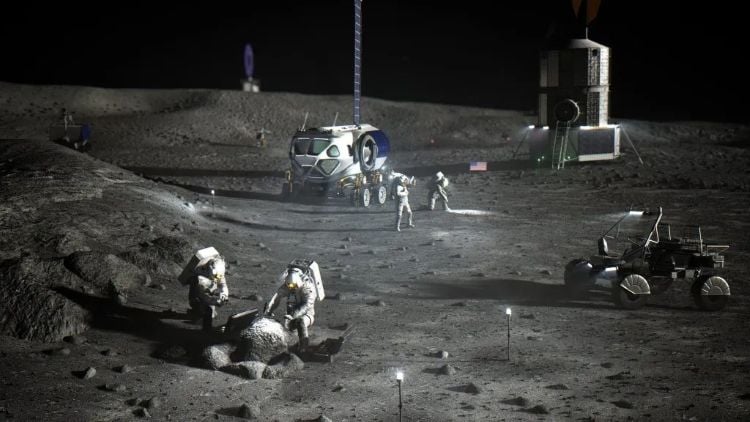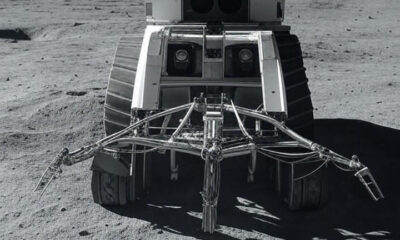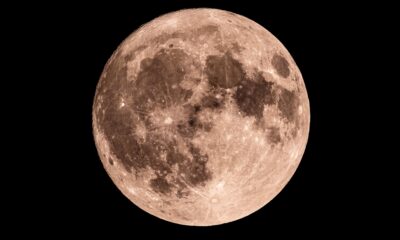Science
Researchers Enhance Lunar Habitat Potential with Thermoelectric Power

A recent study published in Acta Astronautica explores how thermoelectric generators (TEGs) could significantly improve power efficiency for future lunar surface habitats. Conducted by a team of researchers from the Republic of Korea, the study investigates a novel approach to harnessing power under the Moon’s extreme environmental conditions, which pose unique challenges for sustaining human life.
The research specifically examines the substantial temperature fluctuations on the lunar surface, ranging from 121°C (250°F) during the lunar day to -133°C (-208°F) at night. These extreme differences could enhance the efficiency of TEGs, a technology that converts heat directly into electricity. Prior studies suggested that these temperature ranges might allow for greater effectiveness in TEG operation, especially through a method known as transient-state operation.
By analyzing the functionality of a new TEG system under lunar conditions, the researchers aimed to demonstrate how a switching heat storage (HS) system, or multiple-HS system, could optimize power generation. Their findings indicate a potential increase of 48.9 percent in power generation when utilizing this method, underscoring the viability of TEGs as a sustainable energy source for long-term lunar habitats.
The study highlights the importance of developing reliable power sources for future missions to the Moon and beyond. As stated by the researchers, “Deep space exploration, including missions such as the establishment of human bases, especially on the Moon and Mars, has garnered significant interest worldwide.” They note that a manned lunar base is essential for deep space exploration, serving as a launchpad for future solar system missions.
While the researchers discuss alternative power sources, including Radioisotope Thermoelectric Generators (RTGs), they caution against relying on them for extended lunar missions due to the decay of radioactive isotopes. RTGs have been successfully employed in past lunar missions, such as those conducted by the Apollo program, and are currently utilized by NASA’s Curiosity and Perseverance rovers on Mars. NASA plans to incorporate RTGs in its upcoming Dragonfly mission, which is scheduled for launch in July 2028.
The potential for solar and nuclear power on the Moon is also considered, with suggestions of using nuclear fission reactors to provide energy for lunar bases. The NASA Artemis program, which aims to establish a sustainable human presence on the lunar surface, further emphasizes the relevance of the study. Advancing technologies for power generation on the Moon not only supports long-term habitation but also lays the groundwork for future crewed missions to Mars, as outlined in NASA’s Moon to Mars Architecture.
Moreover, the research advocates for in situ resource utilization (ISRU), a practice that leverages local resources instead of relying on supply shipments from Earth. TEGs, by utilizing the Moon’s extreme temperature variations, exemplify this approach, contributing to sustainable mission practices.
As humanity continues to explore possibilities for long-term settlements beyond Earth, studies like this illustrate the growing interest in adapting Earth-based technologies for life in space. The findings regarding TEGs could represent a crucial step in powering lunar habitats, providing a reliable energy source until more advanced systems are developed.
The question remains: how will thermoelectric power generation evolve to support lunar habitats in the coming years? Ongoing research will be vital in answering this query as humanity pushes forward into the next frontier of space exploration.
-

 Technology5 months ago
Technology5 months agoDiscover the Top 10 Calorie Counting Apps of 2025
-

 Health3 months ago
Health3 months agoBella Hadid Shares Health Update After Treatment for Lyme Disease
-

 Health3 months ago
Health3 months agoErin Bates Shares Recovery Update Following Sepsis Complications
-

 Technology4 months ago
Technology4 months agoDiscover How to Reverse Image Search Using ChatGPT Effortlessly
-

 Technology1 month ago
Technology1 month agoDiscover 2025’s Top GPUs for Exceptional 4K Gaming Performance
-

 Technology3 months ago
Technology3 months agoElectric Moto Influencer Surronster Arrested in Tijuana
-

 Technology5 months ago
Technology5 months agoMeta Initiates $60B AI Data Center Expansion, Starting in Ohio
-

 Technology5 months ago
Technology5 months agoRecovering a Suspended TikTok Account: A Step-by-Step Guide
-

 Health5 months ago
Health5 months agoTested: Rab Firewall Mountain Jacket Survives Harsh Conditions
-

 Lifestyle5 months ago
Lifestyle5 months agoBelton Family Reunites After Daughter Survives Hill Country Floods
-

 Health3 months ago
Health3 months agoAnalysts Project Stronger Growth for Apple’s iPhone 17 Lineup
-

 Technology4 months ago
Technology4 months agoHarmonic Launches AI Chatbot App to Transform Mathematical Reasoning





















